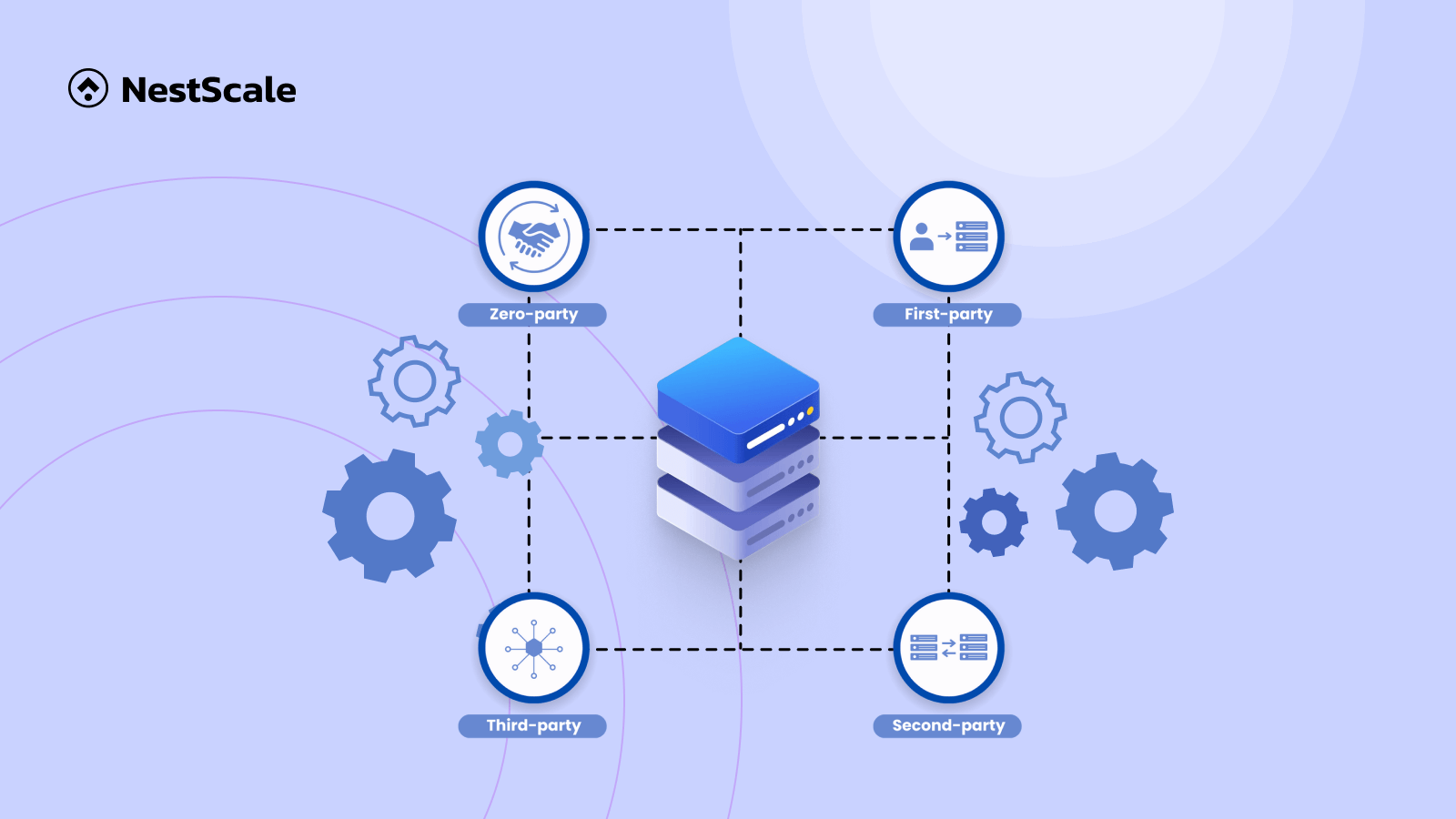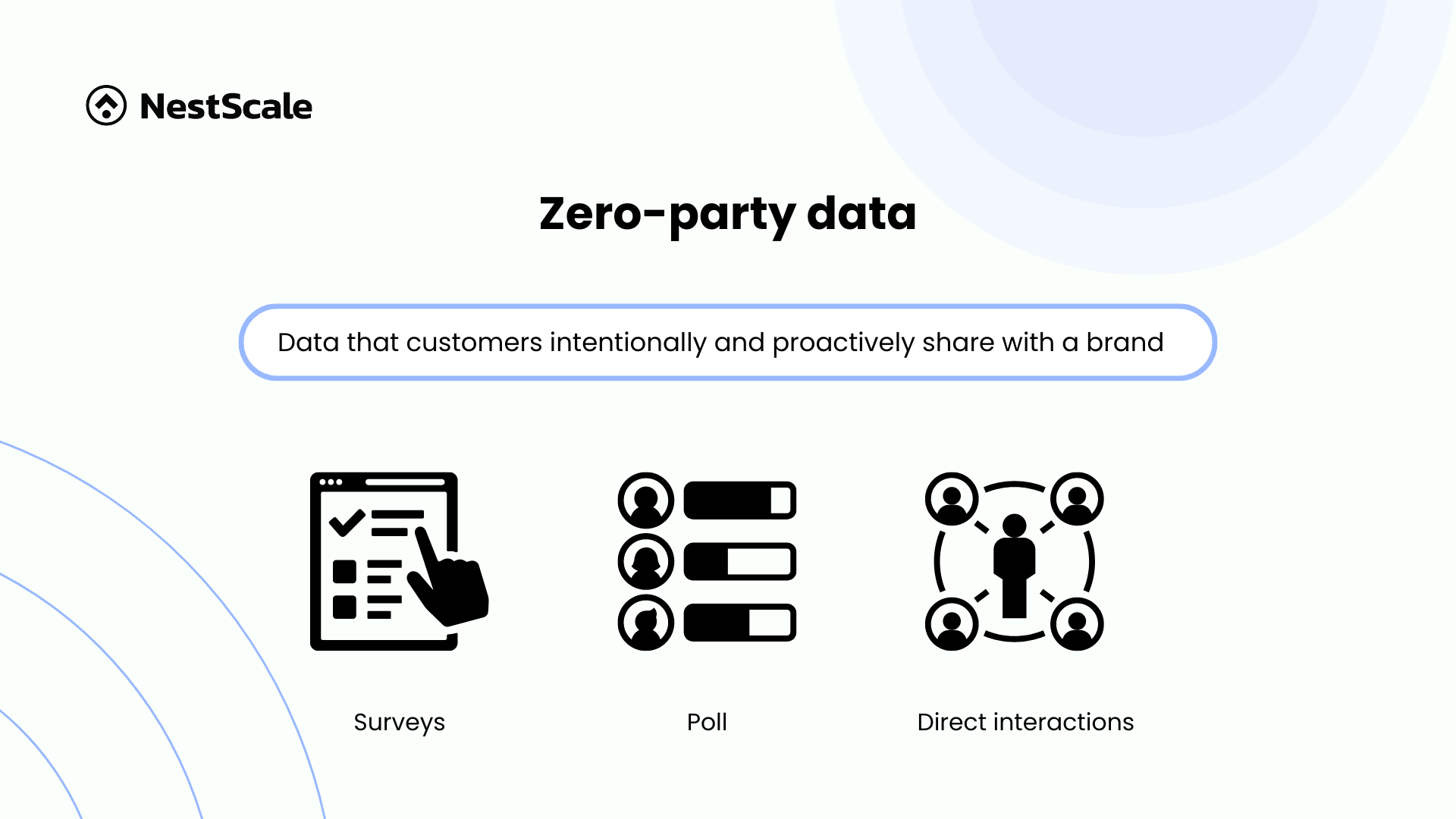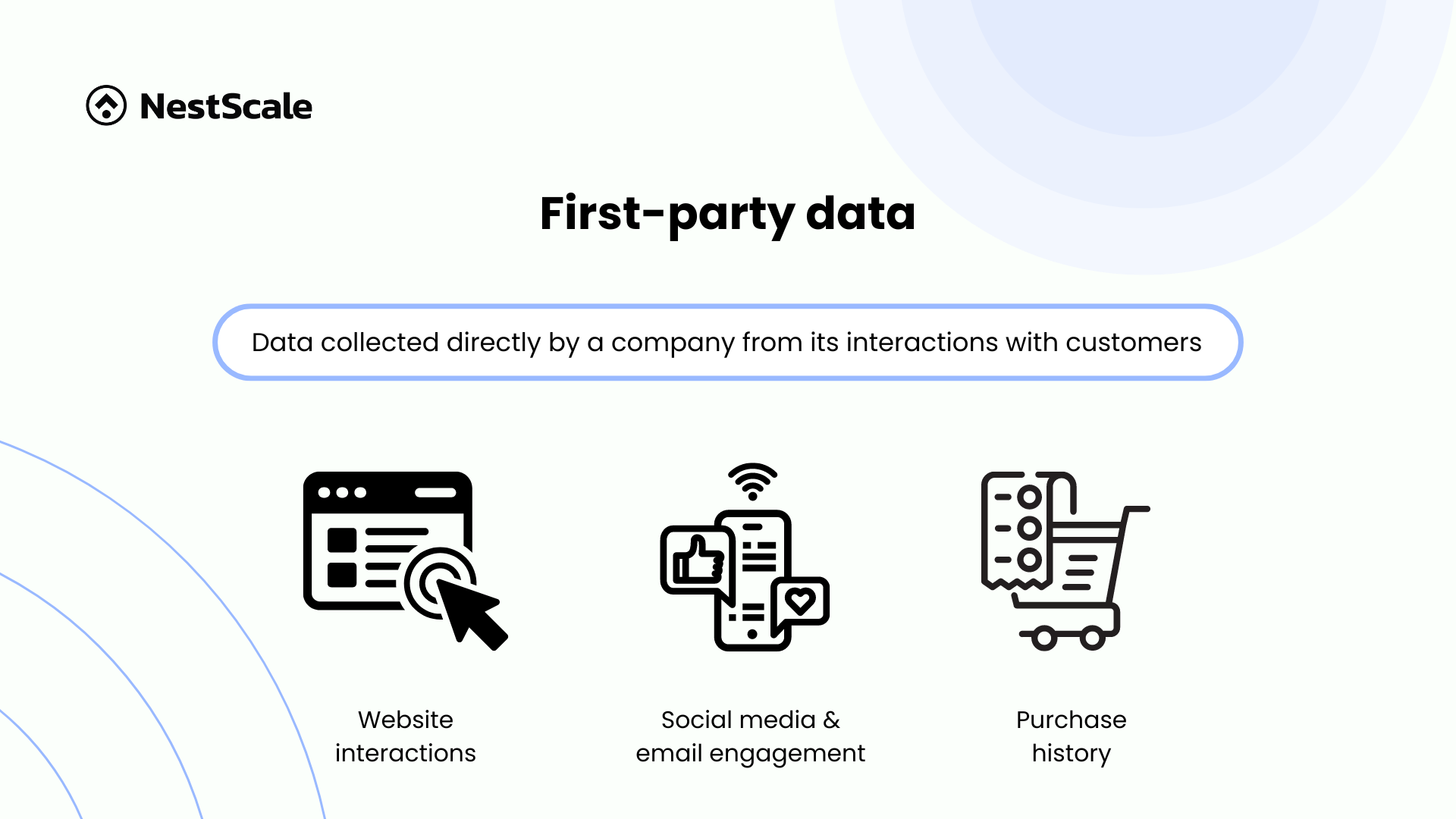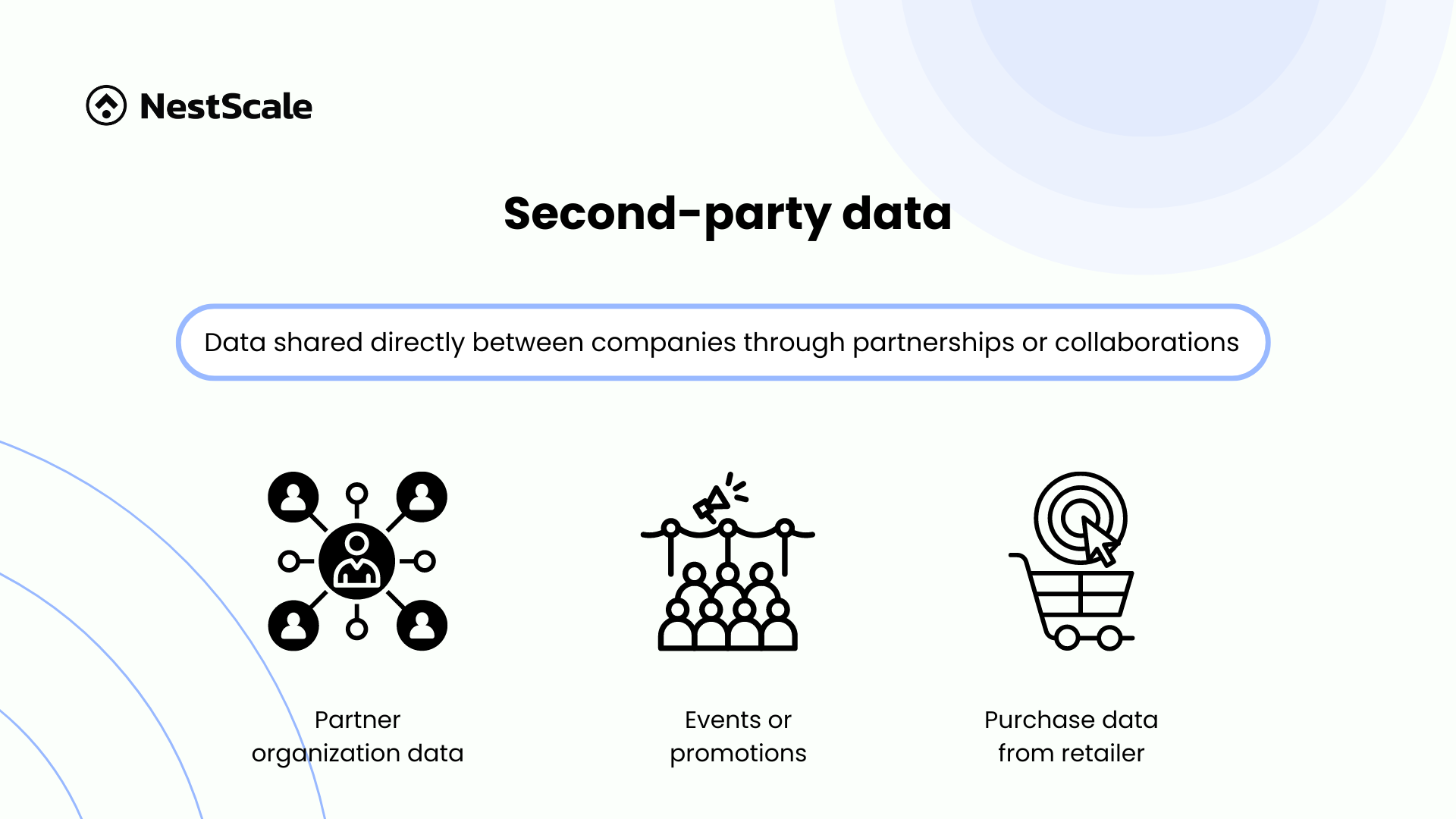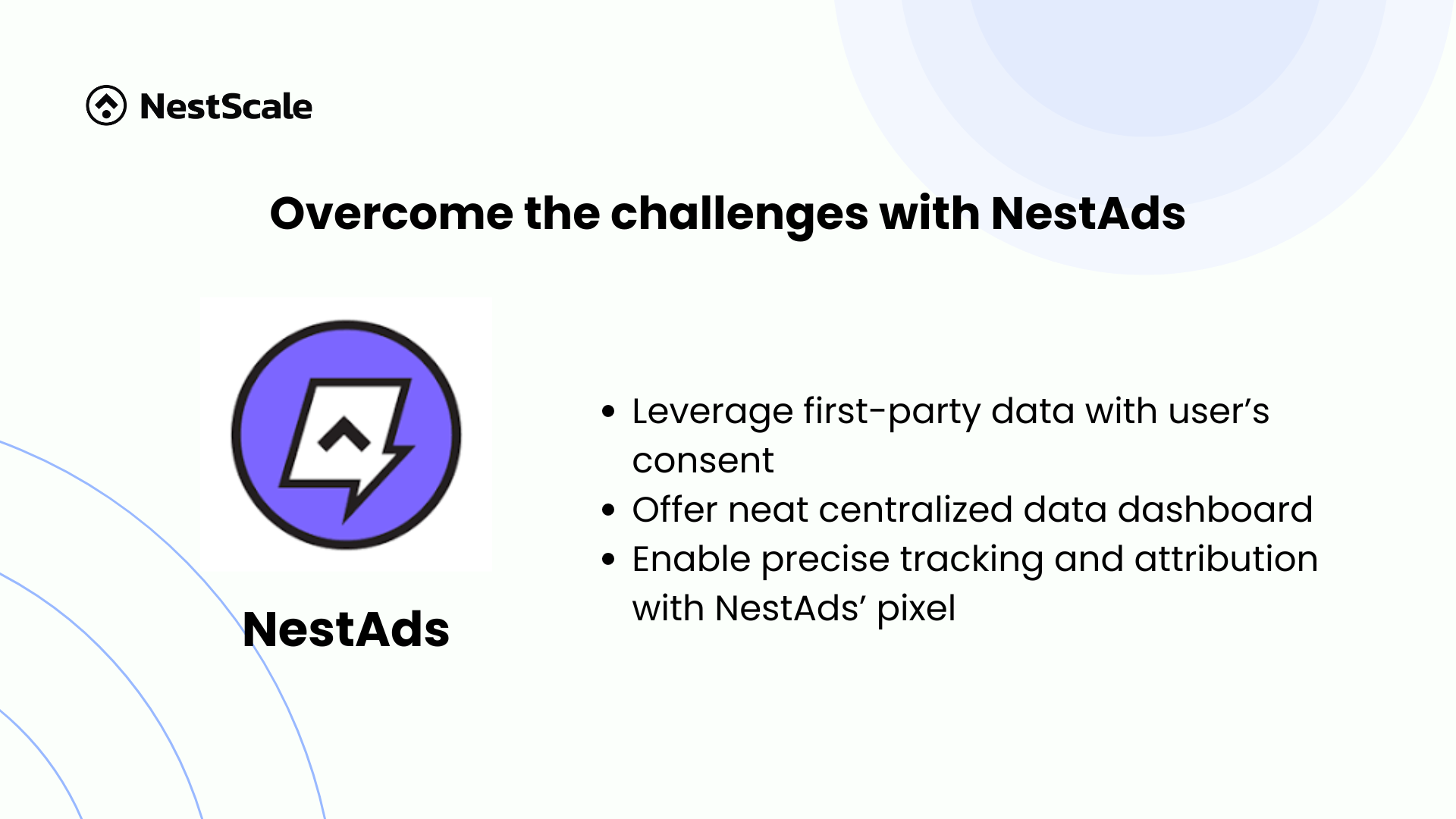In today’s landscape of evolving data privacy regulations and heightened customer expectations, knowing where your data comes from is more important than ever. Understanding the distinctions between zero, first, second, and third-party data is essential for crafting effective strategies that prioritize data security and customer satisfaction.
In our previous blog, we focused on first-party data definition, which has become increasingly crucial amid shifting privacy regulations and the demand for personalized customer experiences. This blog will delve into the definitions and uses of zero first second third party data, highlighting their unique contributions to a comprehensive data strategy.
Understanding zero first second third party data
While first and third-party data are widely discussed, it’s equally valuable to explore the roles of zero and second-party data in enhancing data strategies. In this part, we’ll delve into the definition, use cases, and challenges of zero first second third party data.
Zero-party data
Before diving into the different of 1st party 2nd party 3rd party data, let’s begin by exploring the realm of zero-party data and its pivotal role in modern data strategies.
What is zero-party data?
Zero-party data refers to information that a customer intentionally and proactively shares with a brand. This can include preference data, purchase intentions, personal context, and how the individual wants the brand to recognize them. Businesses often collect this type of data through surveys, quizzes, and direct interactions where the customer willingly provides information.
Examples of zero-party data:
- Customers voluntarily provide details such as their name, email address, and phone number.
- Information on potentially sensitive topics, like political opinions or health-related concerns, is shared directly by customers.
- Data from actions such as adding items to a wish list, completing surveys, or engaging in loyalty programs.
- Customer preferences on products, services, and communication methods, are gathered through direct interactions like quizzes or feedback forms.
How Is zero-party data used?
Zero-party data is key for companies aiming to boost personalization and engage customers more deeply. Unlike inferred or observed data, zero-party data is explicitly shared by customers via surveys, preference centers, or direct interactions. This voluntary and accurate data enhances the value of first-party data by directly reflecting customers’ preferences, intentions, and interests.
By leveraging zero-party data, companies can:
- Enhance personalization: Use explicit preferences and interests shared by customers to tailor products, services, and marketing communications more precisely.
- Improve customer experiences: Gain deeper insights into customer needs and expectations, allowing companies to optimize their offerings and services accordingly.
- Increase trust and transparency: Since zero-party data is willingly provided by customers, companies can build stronger relationships with customers by demonstrating respect for their preferences and privacy concerns.
Challenges
A major hurdle for using zero-party data is that many consumers don’t trust how companies handle their personal information. Research by Salesforce shows that 74% of people think companies collect more data than they need, and 61% believe companies aren’t clear about how they use this data.
To tackle this issue, companies need to earn trust over time and across different platforms. This means being transparent about how they collect and use data, respecting user privacy, and consistently providing positive experiences.
Another challenge of zero-party data is collecting it in sufficient quantities as zero-party data requires active participation from customers. This means businesses often struggle to collect large volumes of zero-party data quickly. For example, not all customers are willing to spend time filling out surveys or providing detailed feedback. The effort required can deter participation, leading to smaller data sets.
First-party data
Next, we explore the fundamental domain of first-party data, leveraging numerous data points to build comprehensive customer profiles. You can notice differences in the definition of first and zero-party data in this section.
What is first-party data?
First-party data is data collected directly from your audience or customers. This includes data from behaviors, actions, or interests demonstrated across your website(s) or app(s), CRM data, subscription data, social data, survey data, and more.
First-party data is highly valuable because it is collected straight from the source, ensuring its accuracy and relevance. It’s controlled and owned by your company, providing a reliable foundation for understanding your customers.
Examples of first-party data sources:
- Information on pages visited, time spent on each page, and interactions with site elements like buttons and forms.
- Records of what products or services customers have bought, including frequency and value of purchases.
- Data on likes, shares, comments, email opens, click-through rates, and responses to email campaigns.
- Insights from mobile app interactions, including features used, time spent in the app, and in-app purchases.
How is first-party data used?
We utilize first-party data to analyze consumer interactions with our brand, aiming to enhance overall customer experience and engagement. This data allows businesses to understand customer behavior on both a holistic and individual level, enabling tailored strategies that resonate more effectively with their audience.
Using first-party data, businesses can:
- Boost personalization: Businesses can tailor marketing messages, product recommendations, and special offers based on individual customer preferences and behaviors.
- Improve marketing efforts: Using first-party data helps in accurately targeting specific customer segments, ensuring that advertising campaigns reach the right audience.
- Nurture existing relationships: Understanding customer purchasing habits and preferences allows businesses to foster loyalty, encourage repeat purchases, and reduce customer churn.
- Analyze and gain valuable insights: Data like customer demographics, behaviors, and interactions help companies to better understand their audience and plan future marketing efforts.
Challenges
Companies must get consent to collect and use data through cookies and other tracking technologies on websites. Increasingly, global data protection regulations require companies to inform consumers about this data collection and provide options to opt out of it or its sale. A consent management platform (CMP) facilitates this notification and consent collection process.
Moreover, collecting first-party data involves various touchpoints and methods, which can present several obstacles. As first-party data is often collected from different sources such as websites, and mobile apps, these sources can create data silos where information is isolated and not easily integrated.
Second-party data
To understand the difference between zero, first second and third party data, now we turn our focus to the realm of second-party data, exploring its collaborative nature and strategic applications in data-driven strategies.
What is second-party data?
Second-party data is essentially someone else’s first-party data. It’s data shared between partners, often through direct relationships or data partnerships. For example, a retailer might share purchase data with a product manufacturer to help both parties better understand their shared customer base. This data is typically reliable, though its scope is limited by the partner’s data collection capabilities.
Examples of second-party data:
- Information shared directly by a partner organization, like a company in the same industry.
- Detailed follower information obtained from a partnered influencer or brand, including engagement metrics and demographics.
- Customer information collected from events or promotions run in collaboration with another company.
- Sales and purchase history data provided by a retailer that stocks and sells your products.
- Data collected from surveys conducted in partnership with another organization.
- Information on user interactions and behaviors obtained from a partner’s website.
How is second-party data used?
Businesses can use second-party data to enhance marketing efforts by partnering with trusted organizations to extend audience reach and create synergistic experiences.
Businesses can share data through collaborations, such as trade shows or webinars, to access new customer segments and deliver targeted, effective marketing campaigns. This collaboration allows companies to leverage reliable data sources while maintaining high data quality and relevance.
Moreover, second-party data can improve personalization efforts. By understanding the preferences and behaviors of a partner’s audience, companies can tailor their marketing messages to be more relevant and engaging. For example, a travel agency could use data from a hotel chain to offer customized vacation packages.
Challenges
Data sharing arrangements between partners are built on trust, but companies are still responsible for how they handle and protect customer information. Ensuring the security and privacy of shared data is a significant challenge. Companies must adhere to strict privacy laws and regulations to avoid penalties.
Another challenge is ensuring that second-party data is relevant and accurate. There’s a risk that the shared data might not align perfectly with the receiving company’s specific needs, limiting its usefulness. This can happen if the partner’s audience or data collection methods differ significantly from the receiving company’s own.
Third-party data
Before jumping to comparing zero, 1st 2nd 3rd party data section, let’s examine third-party data, exploring what is it, its utilization, and its challenges in today’s digital world.
What is third-party data?
Third-party data is collected by an entity that does not have a direct relationship with the consumer. This data is aggregated from a variety of sources, often compiled by data brokers or aggregators, and sold to companies to enhance their customer data profiles.
While third-party data can provide a broad range of insights and reach new audiences, its accuracy and relevance can be questionable. Moreover, with increasing privacy regulations, the use of third-party data is becoming more restricted and can lead to consumer distrust.
Examples of third-party data:
- Age, gender, income level, education, and occupation data purchased from third-party data providers.
- User browsing habits, search history, and purchase behavior compiled from various websites and sold by third-party vendors.
- Information on user locations and movement patterns collected from mobile apps and devices.
- Insights into user interests, hobbies, lifestyle choices, and values sourced from external data aggregators.
How is third-party data used?
Third-party data is typically used to enhance and supplement a company’s existing data. By integrating third-party data, businesses can gain access to a larger pool of insights, helping them to better understand market trends, customer behavior, and potential new audiences. This enriched data can improve the accuracy and effectiveness of marketing campaigns, allowing for more targeted and personalized outreach.
For instance, we can use third-party data to clean up and verify existing customer information, ensuring that records are accurate and up-to-date. Businesses can also use it to fill in gaps in customer profiles, providing a more complete picture of the target audience. This enhanced data helps in segmenting audiences more precisely, optimizing ad spend, and improving overall campaign performance.
Challenges
One of the major challenges is ensuring data accuracy. Third-party data, collected from various external sources, may not always be reliable or up-to-date. This can lead to inconsistencies and inaccuracies in customer profiles, ultimately affecting the quality of marketing strategies and decisions.
Additionally, the impending Google phase-out of third-party cookies further complicates the use of third-party data. This shift demands that businesses find alternative methods to track and understand their audience.
To overcome the challenges of third-party data, businesses should prioritize using first-party data. NestAds, an advanced ad tracking and marketing attribution platform, seamlessly integrates with your existing systems, offers a centralizing dashboard, user-friendly and suitable pricing plans that suit all size Shopify businesses.
Our solution collects first-party data with the consent of valid users and does not rely on cookies. Don’t let the end of third-party cookies hinder your marketing strategies. Embrace the future of data-driven marketing with NestAds.
Zero first second third-party data comparison
Let’s take a look at the table to see the differences between zero-party data, first-party data, second-party data, and third-party data.
| Criteria | Zero-party data | First-party data | Second-party data | Third-party data |
| Definition | Data that customers intentionally share with a company | Data that a company collects directly from its customers | Data shared between trusted partners | Data collected by an entity that does not have a direct relationship with the customer |
| Examples | Personal preferences, feedback/surveys | Website/app interactions, purchase history | Partner shared event data, loyalty program data from a partner | Data from data aggregators, demographic data purchased from a third party |
| How it’s used | – Personalization of experiences – Tailor marketing messages | – Improve customer experience – Retargeting and engagement | – Extend audience reach – Create synergistic experiences | – Enhance audience profiles and segmentations – Enrich existing data |
| Accuracy | High, as it is directly provided by the customer | High, as it is directly observed or recorded by the company | Varies depending on the quality of the partner’s data | Can vary greatly; often less accurate than first or zero-party data |
| Trust level | High, since it is voluntarily shared by the customer | High, as customers are usually aware of the data collection | Moderate to high, depending on partner’s relationship | Low, as customers are often unaware their data is being collected |
Wrap up
Understanding the distinctions between zero-party, first-party, second-party, and third-party data is crucial for navigating today’s data landscape responsibly and effectively.
As businesses adapt to stricter data privacy regulations and consumer demands for transparency, leveraging first-party data emerges as a pivotal strategy for building trust and delivering personalized customer experiences.
In our next blog, we’ll explore the best strategies for collecting first-party data, focusing on ethical practices, effective implementation, and maximizing insights to drive business growth and customer satisfaction.




































